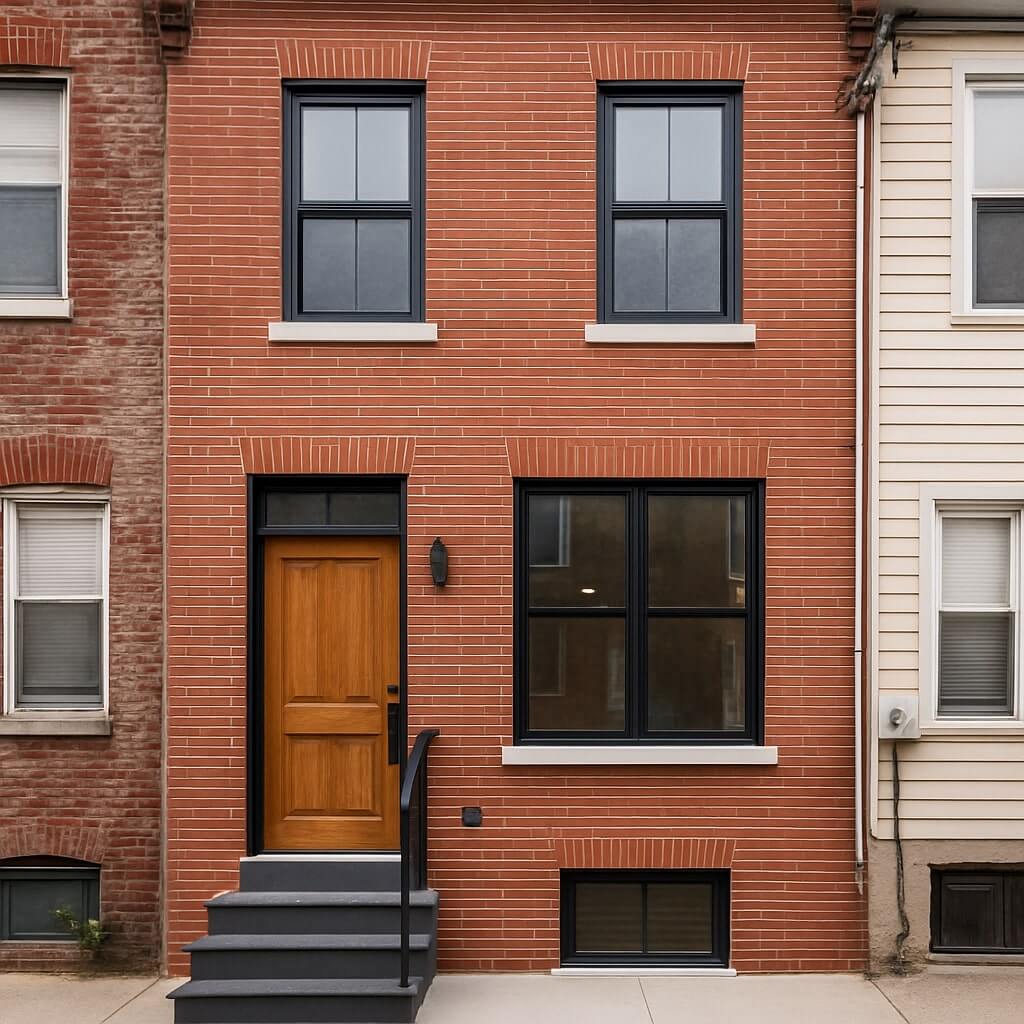Philadelphia row homes are more than just buildings—they’re rich pieces of history and culture. Whether you’re moving into a classic South Philly row home or revitalizing a fixer-upper in Fishtown, a successful Philly row home renovation combines preserving historical elements with modern upgrades.
This guide walks you through everything: cost breakdowns, design inspirations, structural updates, contractor tips, and common pitfalls—so you can transform your row house into your dream home.
Why Renovate a Philly Row Home?
Philadelphia’s row homes date back as far as the 18th century. Renovating one is a unique opportunity to preserve architectural history while adding functionality and value.
Top Reasons to Renovate:
- Increase resale value
- Improve energy efficiency
- Maximize narrow layout potential
- Modernize plumbing, wiring & insulation
- Preserve historic features like cornices, brick facades & hardwood floors
Popular Renovation Ideas for Philly Row Homes
- Open Concept Living
Knock down non-structural walls to open up tight spaces, especially between living, dining, and kitchen areas. - Exposed Brick Walls
Sandblast and seal original brickwork to create a rustic-modern vibe. - Basement Finishing
Turn unused basements into gyms, offices, or in-law suites (be sure to waterproof first!). - Roof Deck Additions
Add a rooftop deck to maximize outdoor space in landlocked neighborhoods like Queen Village or Point Breeze. - Energy-Efficient Windows
Replace old single-pane windows with double-glazed energy-efficient options that still match the neighborhood aesthetic.
Philly Row Home Renovation Costs (2025 Estimate)
| Renovation Type | Average Cost (USD) |
|---|---|
| Full Gut Renovation | $100,000 – $300,000 |
| Kitchen Remodel | $25,000 – $60,000 |
| Bathroom Upgrade | $15,000 – $35,000 |
| Roof Replacement | $7,000 – $15,000 |
| Basement Renovation | $20,000 – $50,000 |
Tip: Costs vary by location (e.g., Old City vs. Kensington), historic permit needs, and foundation issues. Always get multiple quotes.
Permits and Zoning in Philadelphia
Renovating a row home often requires permits from the Philadelphia Department of Licenses & Inspections (L&I). Especially for:
- Structural changes
- Electrical/plumbing updates
- Roof decks
- Historical exteriors
Visit www.phila.gov to check zoning rules and file online permits.
Choosing the Right Contractor in Philly
Look for a contractor with:
- Experience in historic restorations
- Familiarity with Philadelphia’s zoning & L&I codes
- Strong local reviews (Google, Angie’s List, Houzz)
Ask for:
- Portfolio of past row home work
- Breakdown of materials/labor cost
- Project timeline with milestones
Philly Row Home Renovation Do’s and Don’ts
| Do This | Don’t Do This |
|---|---|
| Keep original hardwood if possible | Don’t paint over exposed brick |
| Waterproof your basement | Avoid cutting corners on electric wiring |
| Consult an architect for layout work | Don’t ignore L&I permit rules |
| Preserve façade for resale value | Don’t block light with dark interiors |
Before and After Inspiration (2025 Trends)
- Before: Narrow galley kitchen, low ceilings, outdated tiles
- After: Open-concept space, pendant lighting, subway tiles, reclaimed wood accents
- Before: Cramped bathroom with poor ventilation
- After: Skylight installation, floating vanity, marble-inspired finishes
Best Neighborhoods in Philly for Row Home Renovation
- Fishtown – Booming arts scene, modern-meets-vintage vibe
- Graduate Hospital – Quiet streets, strong resale market
- Northern Liberties – Ideal for loft-style conversions
- West Philly – Affordable, great for first-time home buyers
- Passyunk Square – Classic South Philly charm + food scene
FAQs about Philly Row Home Renovation
Most full renovations take 6–12 months depending on scope, permits, and contractor availability.
DIY is possible for minor upgrades (painting, tiling), but structural or electrical work should always be handled by professionals.
Many are. Homes in historic districts like Society Hill require specific preservation guidelines.
Always start with foundation and structural safety, followed by roofing, then interiors.
Yes! Look into Philadelphia’s Preservation Incentive Program and federal historic tax credits if applicable.
Conclusion
A Philly row home renovation is more than just a project—it’s a restoration of legacy and a smart investment. With the right planning, trusted professionals, and local know-how, you can transform a tired structure into a timeless, functional, and stylish home.

